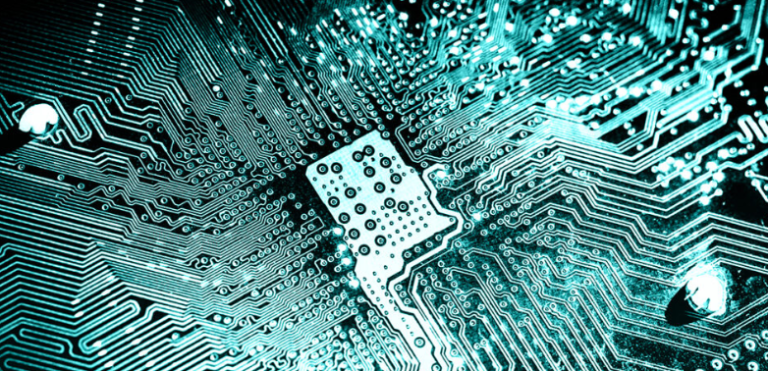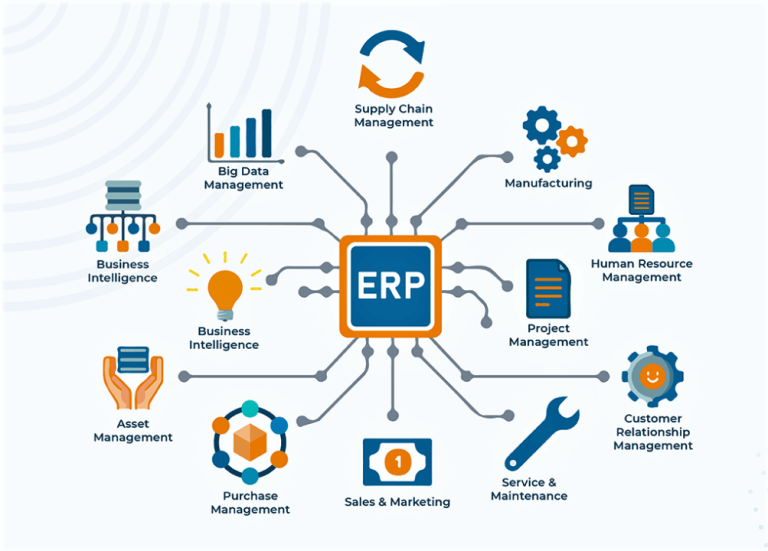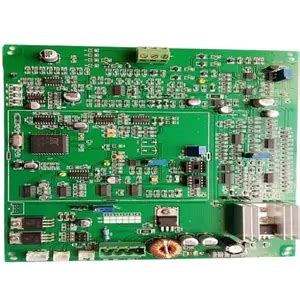Revolutionizing Electronics: Inside the World of PCB Assembly Companies
Key Takeaways
Understanding the transformative role of PCB assembly (PCBA) companies is crucial in appreciating the advancements in modern electronics. These companies are at the forefront of innovation, leveraging cutting-edge technologies to revolutionize how electronic devices are manufactured. Whether through state-of-the-art automation or meticulous quality assurance practices, they ensure that every circuit board shares a commitment to precision and reliability. The integration of automation has not only increased efficiency but also significantly reduced error rates, making the manufacturing process more robust. In recognizing these advancements, one can see how PCBA companies are shaping the future of electronics by fostering unparalleled levels of sophistication and sustainability in device production. The focus on sustainable practices further emphasizes their role in driving an environmentally conscious approach within the industry. Ultimately, the contributions of these companies underscore their pivotal position in continual technological progress and their impact on everyday electronic devices.
The Evolution of PCB Assembly: A Brief History
In the rapidly evolving domain of electronics, PCB assembly has a rich and transformative history. Originally conceptualized in the early 1900s, the printed circuit board underwent several iterations before becoming the backbone of modern electronic devices. The use of conductors printed directly onto insulating substrates marked the early stages of this innovative process. It wasn’t until the 1940s that PCBs truly began to take shape with the advent of PCBA technology during World War II, as they provided a more compact and reliable alternative to traditional point-to-point wiring.
“Understanding the historical aspects of PCB assembly is crucial for appreciating its modern advancements,” reflects industry experts. With improvements in manufacturing techniques and materials, PCBA has continuously evolved. The 1950s and 1960s saw significant strides with the introduction of epoxy resins as substrate materials, enhancing durability and electrical performance. This period also marked the shift towards mass production, dramatically lowering costs and making electronics more accessible.
By the late 20th century, advancements such as surface-mount technology (SMT) revolutionized PCB assembly, enabling even more compact and efficient design layouts. Today, state-of-the-art machinery and computer-aided design (CAD) software play pivotal roles in ensuring precision and efficiency in PCBA production. Each era has contributed layers of complexity and sophistication to what we now consider routine technological marvels.
“From rudimentary methods to sophisticated modern practices, each milestone in PCB assembly reflects a leap towards greater efficiency, durability, and functionality,” notes Dr. Michael Curtis, a leading PCB technologist.
This historical perspective underscores how foundational innovations have paved the way for contemporary breakthroughs in electronics manufacturing. Understanding this evolution aids further appreciation of how PCB assembly companies not only adapt to technological shifts but also spearhead advancements that shape our digital future.
Cutting-Edge Technologies in PCB Manufacturing
In today’s fast-paced electronics industry, PCB assembly companies are leveraging cutting-edge technologies to stay ahead. Advanced machinery such as automated pick-and-place systems and high-precision soldering robots are revolutionizing the pcba process. These machines ensure components are placed with unprecedented accuracy, enhancing both the reliability and performance of finished electronic products. Furthermore, innovations in 3D printing and computer-aided design (CAD) allow for rapid prototyping, significantly reducing the development time for new devices. The integration of IoT in manufacturing systems also enables real-time monitoring and adjustments, optimizing production lines for efficiency and quality. These technological advancements have positioned PCB assembly companies as pivotal players in the creation of next-generation electronic devices, driving forward an era of smarter and more capable technology.
The Role of Automation in Modern PCB Assembly
In the realm of PCB assembly (PCBA), automation stands as a cornerstone of modern production processes, significantly enhancing efficiency, precision, and scalability. The integration of cutting-edge robotic technologies and sophisticated software systems allows PCB assembly companies to manage intricate assembly tasks with unparalleled accuracy. Automated assembly lines reduce the possibility of human error, ensuring components are precisely placed and soldered onto boards.
A key component of automation in PCBA is the use of Surface Mount Technology (SMT) machines. These machines automatically place electronic components onto the surface of printed circuit boards (PCBs) with remarkable speed and accuracy. Additionally, automated optical inspection (AOI) systems play a crucial role in quality control by meticulously checking for any defects or inconsistencies in the assembled PCBs.
Below is an example table showcasing different automated processes involved in modern PCB assembly:
| Automated Process | Function |
|---|---|
| Pick-and-Place Machines | Precisely position components on PCB |
| Soldering Robots | Efficiently solder components onto PCB |
| Automated Optical Inspection (AOI) | Detect defects and ensure quality |
| Conveyor Systems | Transport PCBs through different stages |
By leveraging automation, PCB assembly companies not only boost production throughput but also achieve higher consistency and reliability in their products. This technological advancement is essential as it forms the backbone for producing increasingly complex electronic devices that meet today’s stringent quality standards.
Quality Assurance and Testing in PCB Production
Ensuring quality assurance and rigorous testing in PCB assembly is crucial for the reliability and functionality of electronic devices. State-of-the-art PCBA companies utilize advanced inspection techniques, such as Automated Optical Inspection (AOI), X-ray inspection, and In-Circuit Testing (ICT), to detect defects and ensure precision. These methods help in identifying faults like misaligned components, soldering issues, or short circuits. Further, environmental stress tests are conducted to scrutinize the durability of the PCBs under extreme conditions. This quality-centric approach not only guarantees the performance of the final product but also reduces the risk of costly recalls or failures in real-world applications. By investing in comprehensive testing protocols, PCB assembly companies affirm their commitment to excellence and continuous improvement in electronics manufacturing.
Innovations Driving the Future of Electronic Devices
In the ever-evolving world of electronics, innovation in PCB assembly is a key driver of progress, transforming how we interact with technology daily. PCB assembly companies are at the cutting edge, utilizing state-of-the-art technologies to push the boundaries of what’s possible. From advanced materials and nanotechnology to flexible circuit boards and miniaturization, these companies are revolutionizing PCBA by making electronic devices smaller, faster, and more efficient. High-speed automation, 3D printing, and artificial intelligence are also playing vital roles in enhancing precision and reducing production times. Quality assurance has reached unprecedented levels with automated optical inspection (AOI) systems ensuring that each PCB meets stringent standards before it moves to the next production stage. Furthermore, the push towards sustainability in PCB assembly—through energy-efficient processes and eco-friendly materials—is paving the way for greener electronics without compromising performance. This relentless pursuit of innovation ensures that PCB assembly companies remain at the heart of creating the future of electronic devices.
Sustainability and Environmental Impact in PCB Assembly
In recent years, the pcb assembly (PCBA) industry has turned its focus toward sustainability and minimizing environmental impact. Leading pcb assembly companies are adopting eco-friendly practices and materials to reduce the ecological footprint of their manufacturing processes. Implementing advanced recycling methods for electronic waste (e-waste) has become paramount, helping to divert significant amounts of discarded electronics from landfills. Additionally, many firms are transitioning to lead-free soldering techniques, which not only comply with international regulations but also mitigate harmful environmental effects. Innovations in energy-efficient manufacturing technologies are also pivotal, decreasing overall energy consumption and greenhouse gas emissions during production. As a result, these eco-conscious approaches are not only enhancing the sustainability of the pcba industry but also contributing positively to global environmental preservation efforts.
Key Players and Leaders in the PCB Assembly Industry
The PCB assembly industry is teeming with formidable companies that have carved out significant roles as frontrunners in the market. These key players are central to the PCBA ecosystem, offering services ranging from rapid prototyping to full-scale production. Companies like Jabil, Sanmina, and Flex are recognized as global leaders, each commanding a substantial share of the PCB market due to their advanced manufacturing capabilities and innovative approaches. These giants leverage cutting-edge technologies such as surface-mount technology (SMT) and through-hole construction to produce high-quality PCBs that meet the stringent demands of modern electronic devices.
Furthermore, these leaders are pioneering advancements in automation, significantly boosting production efficiency and precision. Their commitment to quality assurance through rigorous testing protocols ensures that each PCB assembly meets exacting standards. Smaller yet innovative firms like Advanced Circuits and Sierra Circuits also contribute significantly by specializing in quick-turn PCB assembly, catering to urgent industry needs with remarkable agility.
Their collective impact reshapes the landscape of electronic manufacturing, making considerable strides towards more compact, efficient, and reliable electronic products. By continuously adapting to technological advancements and market demands, these companies not only sustain their leadership status but also drive the industry’s progress towards an innovative future.
Conclusion
In conclusion, PCB assembly companies stand as pivotal players in the ever-evolving world of electronics manufacturing. By integrating cutting-edge technologies, such as surface mount technology (SMT) and automated optical inspection (AOI), these firms not only streamline pcb assembly processes but also elevate the efficiency and reliability of end products. Their rigorous quality assurance protocols ensure every pcba meets industry standards, reflecting a commitment to excellence that resonates throughout the electronics sector. As they continue to innovate and adapt to new challenges, PCB assembly companies will undoubtedly be instrumental in shaping the future of electronic devices, driving forward both innovation and sustainability.
Frequently Asked Questions
PCB assembly (PCBA) is a complex process that often prompts some common questions. One of the frequently asked questions is, what exactly is a PCB assembly company? A PCB assembly company specializes in placing and soldering electronic components onto a printed circuit board, transforming it from a simple board into a fully functional electronic circuit.
Another question that often arises is, why is automation crucial in modern PCBA? Automation enhances precision and reduces errors in the assembly process, ensuring higher quality and consistency in the final product. This integration of cutting-edge technology not only speeds up production but also drives down costs, making electronics more accessible.
Many also inquire about the types of testing involved in PCB production. Quality assurance is paramount, involving various testing methods like AOI (Automated Optical Inspection) and ICT (In-Circuit Testing) to ensure that each board meets stringent quality standards.
Lastly, there’s considerable interest in how PCBA companies are addressing sustainability. From using eco-friendly materials to implementing energy-efficient technologies, these companies are making strides towards reducing their environmental impact while still pushing the boundaries of innovation.
Interested in Learning More About PCB Assembly?
For an in-depth look at our services and to explore how we can assist with your PCBA needs, please click here. Dive deeper into the world of PCB assembly with us!







